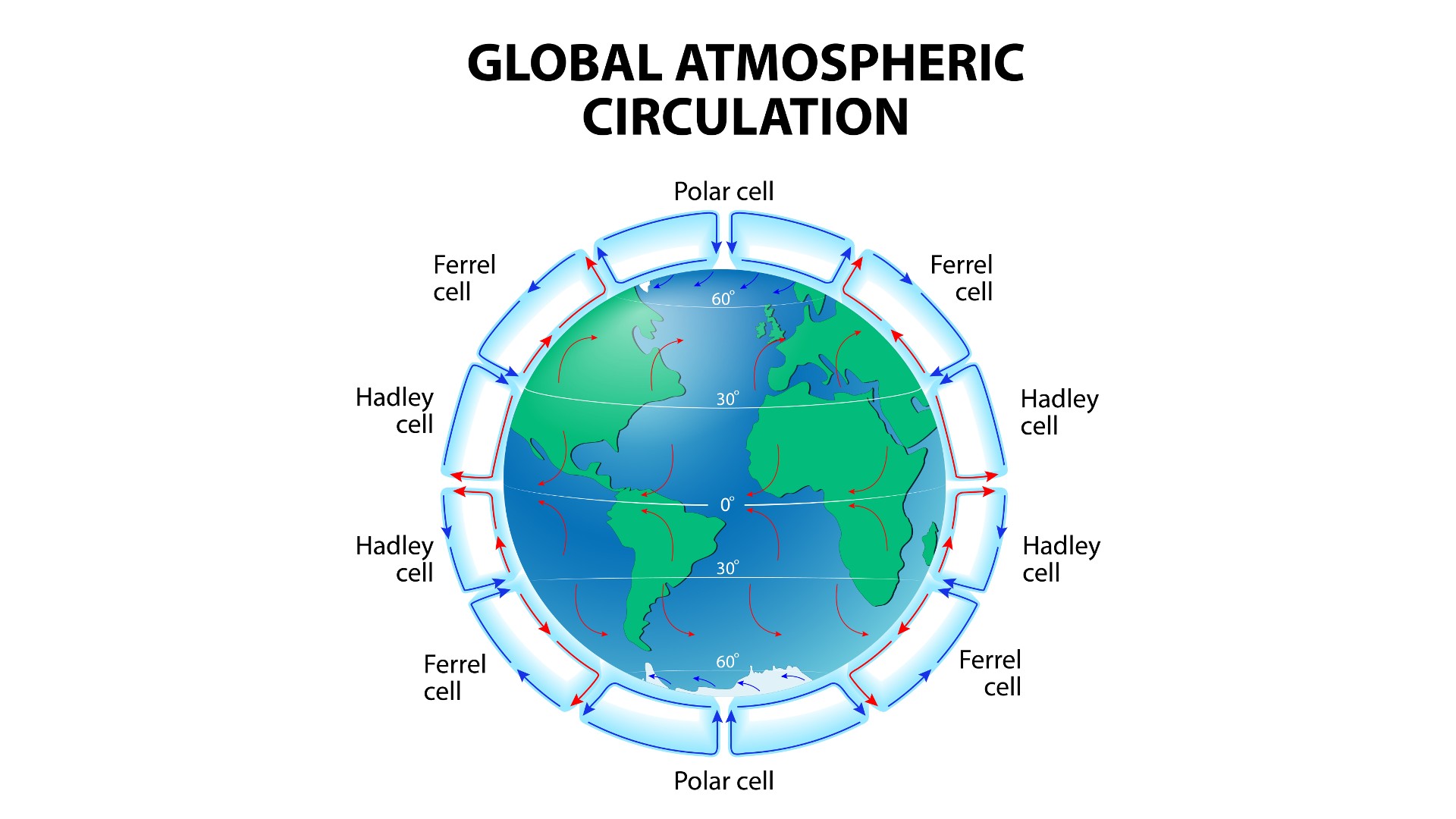Why are deserts dry?
Deserts are found around the world, including next to oceans. But why are these regions dry?

Deserts can take many forms — including sweeping sand dunes, rocky canyons, sagebrush steppes and polar ice fields. But they're united by one thing: a lack of rainfall. Generally speaking, anywhere that gets less than 10 inches (25 centimeters) of rain a year counts as a desert, said Lynn Fenstermaker, an ecologist at the Desert Research Institute in Reno, Nevada.
Of course, that lack of rain means deserts are, famously, dry. But why do some places on Earth get much less rain than others? In other words, why are deserts dry?
Global air circulation patterns are the biggest reason, Fenstermaker said. Solar energy hits Earth most directly at the equator, heating the air and evaporating moisture from it. That warm, dry air rises and travels toward the poles. It tends to sink again around 30 degrees latitude, Fenstermaker explained. This circulation pattern is called a Hadley cell, and it drives the trade winds, which fueled early exploration of the globe by seafaring explorers. It's also why many of the world's biggest deserts — such as the Sahara and the Gobi in the Northern Hemisphere, and the Kalahari in the Southern Hemisphere — are at these midlatitudes.
Related: Could the Sahara ever be green again?
But the story is more complicated than that. Wind patterns interact with topography to influence where deserts are found. For example, air that sweeps in from the ocean and hits a mountain range will release its moisture as rainfall or snow onto the slopes as the air rises. But by the time the air crosses the mountains and sinks down the other side, it's dry. In California, for example, the Mojave Desert sits in the rain shadow of the Sierra Nevada, Fenstermaker said.
Sometimes, inland areas are drier because they're so far from a large body of water that air blowing in has lost all its moisture by the time it arrives, said Andreas Prein, an atmospheric scientist at the National Center for Atmospheric Research in Boulder, Colorado. This is the case with the Gobi Desert in Central Asia, which is also shielded by the Himalayas.
On the other hand, coastal doesn't always mean wet. Cold ocean currents colliding with the air moving into the coast can create fog. When that fog moves over land, the moisture stays in the air instead of falling as rain. This can create deserts that abut the ocean, such as the Atacama in Chile, one of the driest places on Earth.
Get the world’s most fascinating discoveries delivered straight to your inbox.
Not all deserts are hot, either; parts of the Arctic and Antarctic count as deserts. Cold air can't hold moisture as well as warm air does, Prein said. So the frigid temperatures at the poles lead to very little rainfall, even though ample water is stored in the ground as ice.
As global climate patterns shift, so do deserts. For example, thousands of years ago, the Sahara was covered in grasslands and tropical forests. And today, climate change is reshaping the boundaries of deserts around the world.
"The Hadley cell is expected to spread north and southwards because of climate change," Prein said, expanding the zone that's ripe for desert formation. Warmer temperatures could accelerate the shift by increasing evaporation of water and drying the air even further. Beyond just rainfall, it's the balance of precipitation and evaporation that defines a desert, Prein added.
"Globally, with warming, what we're anticipating is that we're going to have more evaporation, and just expansion of existing desert regions," Fenstermaker noted.
Human pressure on landscapes is contributing, too. Cutting down trees to plant crops removes native vegetation, and some research suggests that deforestation in the tropics is reducing precipitation. If more water evaporates instead of being held in the soil by plants, a feedback loop nudges landscapes drier and drier. Semiarid areas on the fringes of existing deserts are particularly vulnerable.
"It's often compounding factors that help deserts to grow," Prein said. "It's not only human activity, or climate change, or the natural climate variability, but it's everything on top of each other that brings ecosystems over the tipping point."

Laurel Hamers is a writer specializing in science, medicine and the environment. Now based in Oregon, she was previously a staff writer at Science News magazine in Washington, D.C. Laurel holds a bachelor's degree in biology from Williams College in Massachusetts and is a graduate of the UC Santa Cruz Science Communication Program.




